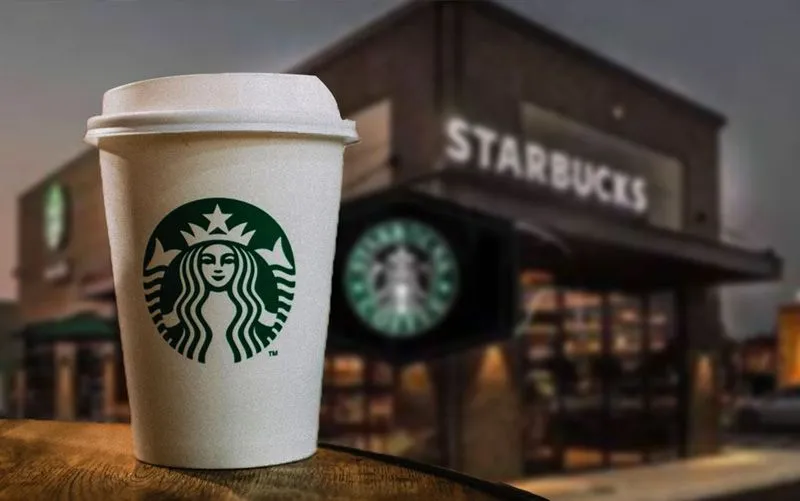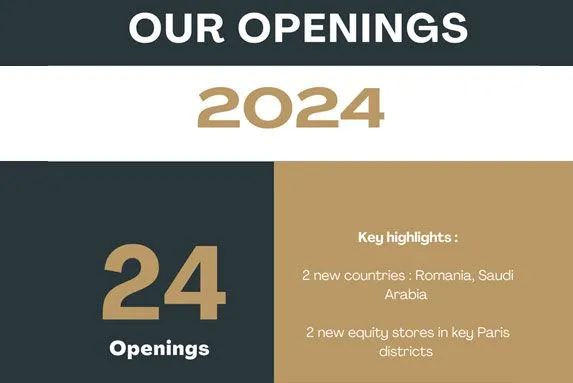Starbucks: More Than Coffee, It’s a Localized Experience

Starbucks transcends its identity as a coffeehouse, evolving into a cultural ambassador and a testament to the synergy of international aspirations and local traditions. While many view Starbucks as just another multinational brand, its success is deeply rooted in its nuanced approach to localization. This article reimagines Starbucks’ localization journey, offering a fresh lens to understand its innovative strategies and cultural adaptation.
At its core, Starbucks’ localization strategy is not merely operational — it’s a philosophy. This article unpacks how the company masterfully tailors its worldwide presence to resonate with local preferences, creating a blueprint for business adaptability.
Starbucks: A Global Coffeehouse Giant
A Brief History of Starbucks’ Expansion
From Seattle to the World
The brand’s journey began in 1971 at Seattle’s Pike Place Market, where it initially operated as a purveyor of premium java beans and equipment. The founders envisioned delivering quality hot beverages, but Howard Schultz’s entry in the 1980s marked a pivotal shift. Inspired by Italy’s coffee culture, Schultz introduced the concept of Starbucks as a "third place" — an inviting environment bridging home and work. This vision redefined the brand’s purpose, turning it into a lifestyle symbol rather than a mere beverage vendor.
Starbucks’ international voyage commenced in 1996 with its debut in Japan, a launch that set the stage for its transformation into a culturally attuned global entity. Today, with over 80 countries under its belt, Starbucks reflects a blend of uniformity and cultural resonance that appeals to millions. Each milestone in its journey underscores the company’s ability to adapt while maintaining a cohesive brand identity.
The Power of Brand Localization
Expanding globally involves more than opening new stores. The company’s competitive advantage is rooted in its ability to immerse itself into diverse cultures, reflecting a deep understanding of customs and tastes. This ability to adapt has enabled the brand to build bridges across continents, crafting a global presence with a local soul. Its journey is not just about coffee but about creating an ecosystem of experiences that resonate across cultures.
Starbucks’ Commitment to Localization
More Than Just Coffee
The brand redefines the coffeehouse experience by creating spaces that celebrate diverse identities and foster meaningful connections. These venues become cultural crossroads, where the familiarity of Starbucks meets the distinctive charm of regional traditions. From product customization to architecture inspired by regional heritage, each store is a tribute to its community.
This approach elevates the brand beyond a transactional enterprise, transforming it into a symbol of cultural pride and communal belonging. By embedding itself into the social fabric, Starbucks turns its locations into more than coffee stops — they become cultural landmarks. These spaces often host community events, serve as study havens, or become the backdrop for countless personal stories.
Building Connections with Local Communities
Localization at this brand is a core principle that underscores its respect for diversity. By tailoring offerings, designs, and interactions to specific markets, the brand reflects an ethos of cultural inclusivity. Each store embodies a dual identity: a global brand enriched by the unique attributes of its host community.
How Starbucks adapts to different cultures is more than an operational adjustment; it’s a dialogue with the culture. Through thoughtful Starbucks global menu differences around the world and community engagement, the company positions itself as a cultural participant rather than just a corporate entity. This proactive engagement fosters a sense of belonging among customers, who see the brand as both an international and local companion.
Adapting Offerings to Local Tastes
The company thrives by blending its global identity with regional flavors. This adaptability is evident in its menu, which balances international favorites with regional specialties. This is not about a customer segmentation, but rather a wholesome experience for everyone.
The Starbucks Menu: A Global Tapestry
Regional Innovations
Starbucks curates a diverse global menu that showcases regional tastes. Whether it’s the Matcha Lattes in Japan or the Horchata Frappuccino in Mexico, these creations reflect its commitment to regional relevance. By actively engaging with culinary experts and customer feedback in each region, Starbucks ensures its menu resonates deeply.
Examples from Asia
In Asia, tea-centric cultures inspire drinks like the Sakura Blossom Latte in Japan or the Sweet Potato Gold Frappuccino in China. These items honor local traditions while adding a modern twist. Additionally, Asia sees unique snacks like pineapple tarts in Taiwan or rice-based desserts in Thailand, demonstrating the brand’s keen understanding of Asian palates.
Examples from Europe
In Europe, the brand respects culinary sophistication. From Viennese pastries to Affogato-style drinks in Italy, the menu reflects the continent’s rich culinary heritage. Starbucks also taps into local festivities, offering region-specific treats during events like Oktoberfest or Bastille Day, ensuring its offerings remain culturally relevant.
Examples from North America
In North America, the brand tailors its offerings to regional tastes, such as the Maple Pecan Latte in Canada or the Pumpkin Spice Latte, a cultural phenomenon born in the U.S. Seasonal menus, from Thanksgiving blends to summer frappuccinos, further strengthen its bond with customers.
Personalizing the Culinary Experience
Dietary Inclusivity
The company caters to diverse dietary needs with options like plant-based milks and allergen-free snacks. This inclusivity broadens its appeal, ensuring that every customer feels valued. Vegan protein boxes in urban areas and low-sugar alternatives in health-conscious regions highlight its focus on evolving consumer trends.
Featuring Local Delicacies
The inclusion of regional specialties, such as mooncakes in China or lamingtons in Australia, deepens the brand’s cultural alignment and enhances customer loyalty. The company often collaborates with local chefs to refine these items, ensuring authenticity while upholding its quality standards.
Tailoring the Store Experience
Design and Ambiance
Starbucks harmonizes global consistency with local inspiration, creating stores that are aesthetically unique yet unmistakably Starbucks. From bamboo accents in Kyoto to Parisian art deco elements, every design tells a story. Moreover, flagship stores in major cities like Shanghai or Milan often act as cultural showcases, incorporating interactive coffee experiences and local art installations.
Respecting Cultural Nuances
The brand adapts its spaces to reflect cultural sensibilities. In the Middle East, gender-sensitive layouts and Islamic art motifs demonstrate its respect for local traditions. Scandinavian stores embrace hygge, offering cozy and inviting environments. Stores in India feature handcrafted furniture and traditional patterns, creating an immersive experience.
Creating Warm Ambiances
The company curates its stores with details like localized playlists and thematic decorations. For instance, South Korean locations celebrate Chuseok with traditional decor, creating spaces that resonate deeply with the community. Additionally, units often feature event-specific decor, such as Diwali lights in India or Lunar New Year symbols in China.
Cultivating Local Partnerships and Collaborations
Supporting Local Producers
Starbucks collaborates with local suppliers, sourcing ingredients that enhance freshness. It helps support regional economies by generating revenue for them. By partnering with Rwandan coffee farmers or Colombian producers, the brand fosters sustainable growth. Such initiatives also enable customers to trace their coffee’s origins, deepening their connection to the product.
Creating Unique Collaborative Experiences
Collaborations with local artisans strengthen the company's cultural connection. From eco-friendly jute bags in India to exclusive merchandise in South Korea, these initiatives highlight the brand’s commitment to regional craftsmanship. Starbucks also engages local artists to design exclusive store elements, further embedding itself in the cultural landscape.
Harnessing Technology and Language: Elevating Accessibility and Convenience
Multilingual Menus and Website Options
Broadening Reach and Accessibility
The brand integrates multilingual menus and digital platforms, ensuring accessibility. In Quebec, bilingual menus reflect linguistic diversity, while Mandarin-friendly kiosks in China cater to local preferences. Starbucks’ apps also adapt to regional languages, ensuring a seamless user experience. This adds to the international marketing efforts and customer loyalty.
Creating a Seamless Customer Experience
Starbucks’ localized digital platforms allow customers to engage effortlessly in their preferred language. Multilingual apps enable users to customize orders, access nutritional details, and explore promotions with ease. These thoughtful adaptations create an intuitive and welcoming customer journey, reinforcing its image as a culturally attuned brand.
Mobile Ordering and Payment Solutions
The company incorporates popular local payment systems in the countries they operate, such as WeChat Pay in China and Paytm in India, making transactions effortless. Digital wallets and app-based loyalty programs further enhance customer convenience. These systems also allow the coffee brand to gather insights into regional preferences.
Embracing Technology for Convenience
Through AI, the company offers tailored recommendations and efficient inventory management. This technology-driven approach ensures a personalized and seamless customer experience worldwide. Features like predictive ordering and location-based offers enhance engagement.
Improving Efficiency
Mobile ordering enhances operational efficiency by reducing wait times and managing high-traffic periods effectively. Customers can order ahead, bypass lines, and enjoy their beverages with minimal delay. The brand further leverages AI to predict preferences based on past orders, delivering a personalized experience.
This technology-driven approach ensures efficient service delivery while fostering customer loyalty through tailored interactions.
The Benefits of Localization
Enhancing Customer Loyalty
Meeting Regional Market Demands
Adapting to regional preferences enables the brand to thrive in diverse markets. From introducing local flavors to incorporating popular payment methods, this global company meets and often exceeds customer expectations. For example, in Southeast Asia, where mobile-first lifestyles dominate, the Starbucks app prioritizes features like mobile ordering and rewards integration.
Localization creates strong emotional connections, fostering loyalty that transcends commercial transactions. Customers feel valued when their cultural preferences are acknowledged. This market research and responsiveness to it positions this chain as a preferred choice in competitive landscapes.
Building a Strong Brand Connection
Starbucks’ technology-driven and localized strategies transcend mere functionality; they create meaningful relationships with customers. By speaking their language, understanding their cultural nuances, and adapting to their technological habits, the brand becomes more than a coffee brand — it becomes a trusted part of their daily lives.
These connections go beyond transactions, turning Starbucks into a cultural companion. As the brand continues to innovate, it sets an example for others, blending technological advancements with authentic localization to succeed in a dynamic global marketplace. These efforts make Starbucks a global expansion success.
Enhanced Brand Reputation
Demonstrating Cultural Sensitivity
Authentic engagement with local traditions bolsters Starbucks’ reputation as a culturally aware brand. This sensitivity ensures the brand is not seen as an intruder but as a partner.
Building Community Trust
By local sourcing and supporting economies and communities, the company earns trust and goodwill in its markets. This trust is reflected in its strong customer base and its role as a cultural ally.
Achieving Global Success Through Strategic Adaptation
Adapting with Agility
This company exemplifies how global brands can thrive by blending consistency with cultural flexibility. Its approach serves as a model for businesses navigating diverse cultural landscapes.
Sustainable Global Growth
Through localization, this coffee chain has built an adaptable and enduring global model, setting a benchmark for sustainable business practices. Its efforts in sourcing, community engagement, and innovation underscore its long-term vision.
Conclusion: Starbucks' Localization Strategy as a Model for Global Achievement
Embracing Diversity
Starbucks’ global localization strategy exemplifies how a recognized brand can transcend borders while respecting the uniqueness of each community it serves. By integrating local customs, flavors, and aesthetics into its offerings, the brand crafts a universal yet deeply personal experience for its customers. Each store becomes a microcosm of cultural exchange, where global identity seamlessly merges with local character.
Crafting Connections
The heart of Starbucks’ success lies in its ability to foster genuine connections. Beyond coffee, it creates spaces where stories unfold, traditions are celebrated, and communities are strengthened. From sourcing local ingredients to honoring regional festivities, the global chain transforms its locations into cultural hubs, each telling a story of collaboration and shared values.
Looking Forward
The future of Starbucks lies in enhancing its globalization strategies through even deeper cross-cultural communication and sustainability initiatives. With the increasing prominence of digital platforms and environmentally conscious consumer behavior, the brand’s global expansion strategy seems to be definitely working. The brand is well-positioned to explore eco-friendly store designs, hyper-localized menu concepts, and advanced AI-driven personalization.
Franchising your business can open doors to new growth opportunities. By taking the right steps to prepare and leveraging platforms like Topfranchise.com, you can set your business up for long-term success.
News
business
by franchise



